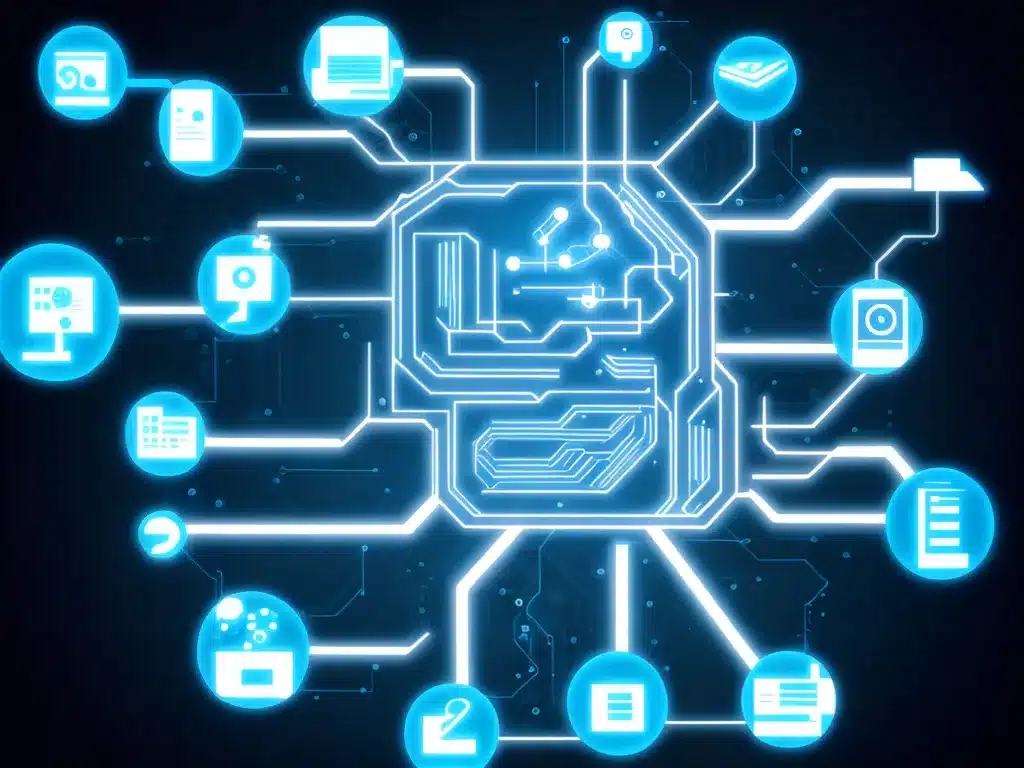
AI and Machine Learning’s Role in IoT
Introduction
The Internet of Things (IoT) refers to the network of physical objects that are embedded with sensors, software, and other technologies to connect and exchange data over the internet. IoT allows objects to be sensed and controlled remotely, creating opportunities for direct integration between the physical world and computer systems. This integration results in improved efficiencies, accuracy, and economic benefit.
AI and machine learning play a crucial role in realizing the full potential of IoT. They provide the tools and techniques to make sense of vast amounts of data generated by IoT devices, draw insights from the data, and enable smart autonomous decision making. AI and machine learning are essential for developing predictive analytics, anomaly detection, natural language processing, vision capabilities, and automation strategies for IoT systems.
In this article, I will examine the key ways AI and machine learning power IoT solutions and drive value. I will also highlight real-world examples of AI and machine learning applications in IoT across various industries.
Enabling Predictive Capabilities
One of the most important applications of AI in IoT is enabling predictive capabilities. IoT devices generate massive amounts of data. AI techniques such as machine learning allow for processing these vast data streams, discerning patterns, and making predictions about potential future events and behaviors.
Predictive capabilities allow businesses to switch from reactive to proactive strategies. By understanding likely future scenarios, organizations can take actions to maximize opportunities and mitigate risks. For example, predictive maintenance analyzes sensor data from industrial equipment to forecast maintenance needs before a failure occurs. This prevents costly downtime.
Other predictive analytics applications powered by AI and machine learning include forecasting energy demands, predicting inventory needs, anticipating cybersecurity threats, and forecasting equipment failures.
Anomaly Detection
Another key capability provided by AI is detecting anomalies in IoT data that flag unusual patterns. Anomaly detection is hugely valuable for monitoring critical equipment and infrastructure in manufacturing, energy, and utilities. Subtle deviations from normal behavior may indicate a fault or signal degradation.
By applying machine learning algorithms to baseline historical data, an expected range of normal behavior can be established. When incoming data from IoT sensors exceeds those thresholds, it triggers an alert for abnormal activity. For example, anomalous vibrations in motors can warn of imminent failure. Early anomaly detection allows prevention of equipment failures that cause work stoppages.
Natural Language Processing
Many IoT applications feature voice-enabled interfaces and chatbots that allow humans to naturally interact with devices. Natural language processing (NLP) techniques enable IoT systems to understand spoken or written language, interpret its meaning, and generate natural sounding responses.
Virtual assistants like Alexa and Google Home integrate NLP to manage domestic IoT devices through voice commands. In enterprise settings, NLP enables building conversational interfaces for easier human-computer interaction with IoT infrastructure.
Computer Vision
Cameras and video have become integral components of many IoT implementations. For example, security cameras, smart mirrors, industrial machine vision, and self-driving vehicles all leverage computer vision capabilities.
Deep learning algorithms trained on image datasets can identify, categorize, or detect objects in footage captured by connected cameras in an IoT system. This provides powerful vision capabilities for gathering visual insights, monitoring events, controlling equipment, and recognizing patterns.
Automation
A major benefit of IoT is enabling automation of tasks and processes. AI and machine learning help build the automated decision-making capabilities needed for IoT automation.
Based on sensor data and predictive analytics, AI models can automatically adjust equipment or system parameters to optimize performance. In manufacturing, algorithms may tweak production lines to improve efficiency and output. Smart energy grids may modulate power distribution and pricing based on demand. Autonomous vehicles react based on road conditions and obstacles.
Rules-based automation and AI allow IoT systems to take over mundane or dangerous tasks typically requiring human operators. This reduces labor costs and risk. The insights from data and automation also minimize waste and improve services.
Case Examples
-
Predictive maintenance is widely used in manufacturing, transportation, and energy sectors using IoT sensors and AI to anticipate failures, schedule repairs, and minimize downtime. For instance, industrial giant Hitachi uses machine learning on thousands of system sensors to estimate the remaining useful life of equipment in factories and mines.
-
Utilities firm ComEd analyzes smart meter data to detect unusual energy usage patterns in homes. By applying machine learning, they can identify potential electrical faults and dispatched technicians to inspect and resolve issues before an outage occurs.
-
In healthcare, IoT devices like wearables track real-time wellness data. AI detects critical changes in patient condition and alerts caregivers. Predictive analytics anticipate risks like heart attacks based on historical trends.
-
Singapore is using computer vision in its smart city initiative. IoT cameras guide traffic management, boost public safety, and support autonomous vehicles. Features like facial recognition enable frictionless public services.
Conclusion
In summary, AI and machine learning are integral technologies enabling IoT solutions to deliver enhanced value. They provide the capabilities to process massive IoT data, identify insights, enable predictions, detect anomalies, comprehend natural language, interpret vision input, and drive automation. With the help of AI and machine learning, IoT systems can make data-driven intelligent decisions in real time without human intervention. These technologies will continue providing the smarts in smart connected IoT products and platforms, allowing organizations to maximize operational efficiency, minimize risks, and provide superior customer experiences.












